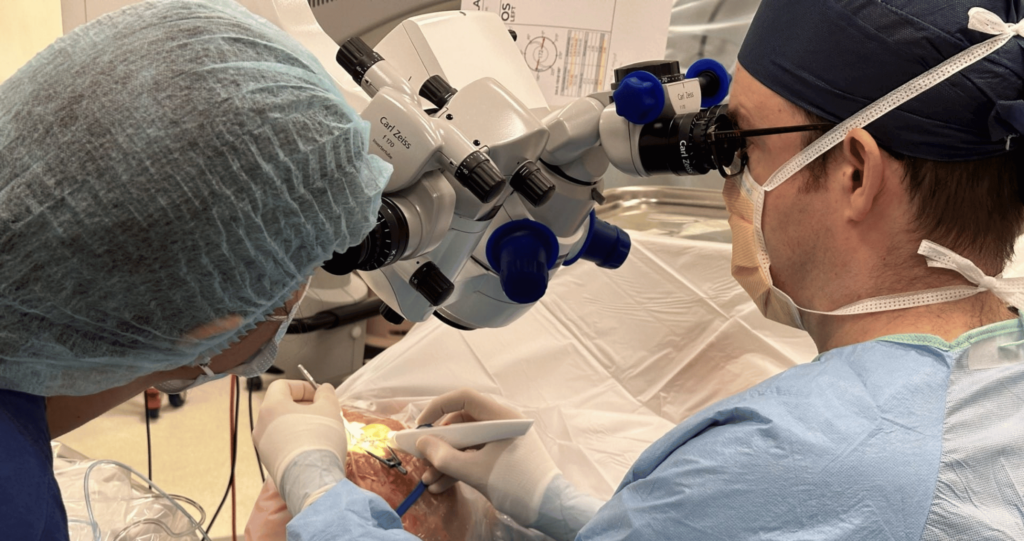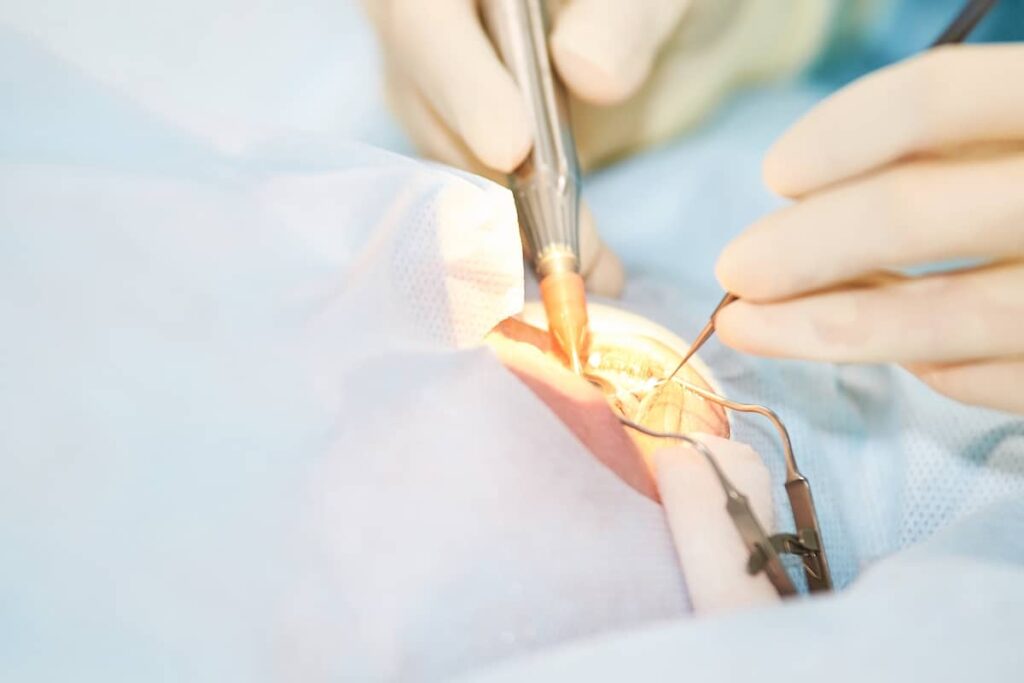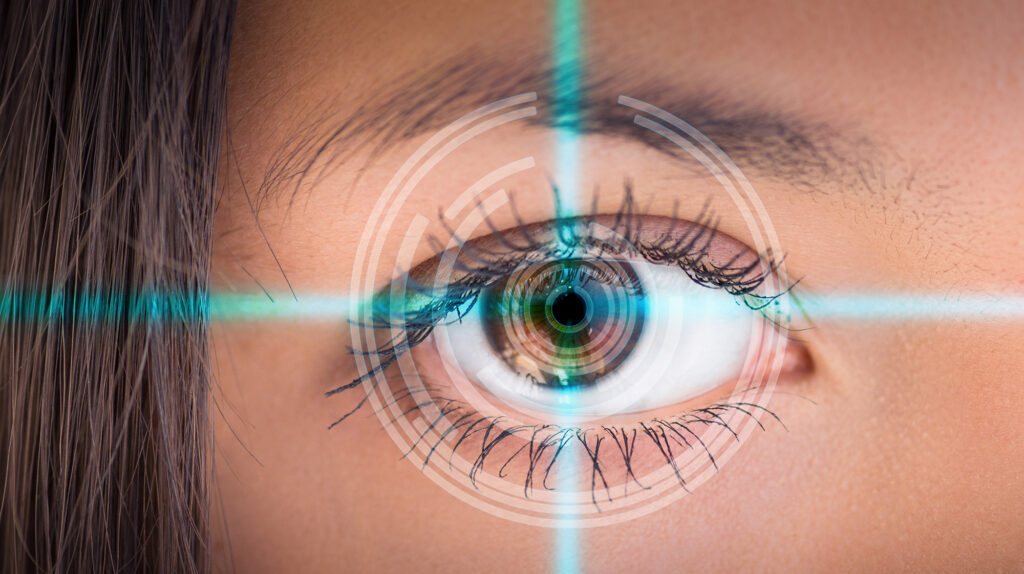Cataract surgery has come a long way in revolutionizing vision for individuals in Sydney. With advancements in technology and surgical techniques, patients now have access to more effective and efficient treatment options. This article will provide a comprehensive overview of the latest advancements in cataract surgery in Sydney and how they are transforming the lives of those affected by this common eye condition.
Understanding Cataracts: A Brief Overview
Cataracts are a common eye condition that affects millions of people worldwide. They occur when the lens of the eye becomes cloudy, leading to blurred vision and difficulty seeing clearly. As cataracts progress, they can significantly impact a person’s quality of life and ability to perform daily activities.
With the advancements in cataract surgery sydney, patients in Sydney can now experience improved vision and a better quality of life. Whether it’s enjoying the scenic beauty of the Sydney Opera House or simply reading a book without the need for glasses, cataract surgery has the potential to transform lives.
It is important to note that cataracts are not limited to older individuals; they can develop in people of all ages, including infants and young adults. While age-related cataracts are most common, there are other types such as congenital cataracts that are present at birth or develop during childhood. Understanding the different types of cataracts can help in early detection and appropriate treatment.
What are Cataracts?
Cataracts are characterized by the gradual clouding of the eye’s natural lens. The lens, which is normally clear, becomes opaque and prevents light rays from properly reaching the retina. This clouding is often the result of aging, but can also be caused by various factors such as genetics, eye injuries, or certain medical conditions.
Furthermore, cataracts can vary in severity, with some causing minor visual disturbances while others lead to significant vision loss. Regular eye examinations are essential for detecting cataracts early on and monitoring their progression to determine the most suitable course of action.

The Impact of Cataracts on Vision
As cataracts develop, individuals may experience a range of vision problems. These can include blurred vision, sensitivity to light, difficulty seeing at night, and a decrease in color perception. Everyday activities like reading, driving, and watching television may become increasingly challenging as cataracts worsen.
In addition to the physical impact on vision, cataracts can also have emotional and psychological effects. Struggling with vision loss can lead to feelings of frustration, isolation, and a loss of independence. Seeking support from healthcare professionals and loved ones is crucial in managing the emotional aspects of living with cataracts.
The Evolution of Cataract Surgery
Cataract surgery has undergone significant advancements over the years. From traditional techniques to more modern approaches, the field of cataract surgery has continuously evolved to provide better outcomes for patients.
As technology has advanced, the evolution of cataract surgery has been marked by a shift towards more minimally invasive procedures that prioritize patient comfort and quick recovery times. These advancements have revolutionized the way cataract surgery is performed, making it safer and more efficient than ever before.
Traditional Cataract Surgery Techniques
Traditional cataract surgery involved manually removing the cloudy lens and replacing it with an artificial intraocular lens (IOL). This process, known as phacoemulsification, required a large incision and sutures to close the wound. While effective, this method often resulted in longer recovery times and increased complications. Read more about phacoemulsification at https://www.ncbi.nlm.nih.gov/books/NBK576419/
Despite its drawbacks, traditional cataract surgery laid the foundation for the innovative techniques that would follow. Surgeons honed their skills through years of practice, perfecting the art of delicate lens removal and implantation.
The Shift Towards Modern Procedures
Modern cataract surgery techniques have introduced significant improvements in both safety and effectiveness. One such technique is known as micro-incision cataract surgery, which involves creating smaller incisions and using advanced tools to break up the cataract before removal. This approach not only reduces surgical trauma but also leads to quicker healing and better visual outcomes.
Another modern approach to cataract surgery is the use of femtosecond laser technology. This cutting-edge method allows for precise incisions to be made with laser accuracy, enhancing the predictability and reproducibility of surgical outcomes. By incorporating laser technology into cataract surgery, surgeons can tailor the procedure to each patient’s unique eye anatomy, resulting in optimized visual results.
The Latest Advancements in Cataract Surgery
Thanks to ongoing research and technological advancements, there have been several exciting developments in cataract surgery that are changing the landscape of treatment options.
Innovative Surgical Techniques
State-of-the-art surgical techniques, such as laser-assisted cataract surgery, have made the procedure even more precise and customizable. This advanced technology allows surgeons to create precise incisions, break up the cataract with laser energy, and place the artificial lens with unmatched accuracy. Patients can experience an enhanced level of safety and precision in their surgery, resulting in improved visual outcomes.
Moreover, the advent of femtosecond laser technology has revolutionized cataract surgery by offering a bladeless and computer-controlled procedure. This technology enables surgeons to perform key steps of the surgery with laser precision, enhancing the predictability and reproducibility of outcomes. The ability to customize the procedure to each patient’s unique eye anatomy has led to improved visual acuity and reduced recovery times.
Cutting-edge Tools and Equipment
The introduction of cutting-edge tools and equipment has also contributed to the latest advancements in cataract surgery. High-resolution imaging systems provide surgeons with detailed information about the eye’s structures, allowing for a more precise evaluation and surgical planning. Additionally, advanced IOL designs now offer patients the opportunity for improved vision correction, such as reducing astigmatism or providing multifocal capabilities.
Furthermore, the integration of intraoperative aberrometry technology has enhanced surgical outcomes by enabling real-time measurements of refractive errors during the procedure. This data allows surgeons to make immediate adjustments to achieve the desired visual outcomes, leading to greater patient satisfaction. The combination of advanced tools, precise imaging, and innovative IOL options has transformed cataract surgery into a highly personalized and effective treatment for patients seeking improved vision and quality of life. Click here to learn more about refractive errors.
The Role of Technology in Cataract Surgery
Technology plays a crucial role in enhancing various aspects of cataract surgery, from diagnosis to post-operative care. It has revolutionized the field, improving patient outcomes and expanding treatment options.
Advancements in technology have not only improved the surgical process but have also enhanced pre-operative diagnostics. For instance, optical coherence tomography (OCT) allows for detailed imaging of the eye’s structures, aiding in the precise measurement of intraocular lens power and selection. This level of accuracy contributes to better visual outcomes for patients post-surgery.
How Technology is Improving Patient Outcomes
From advanced diagnostic tools to state-of-the-art surgical equipment, technology has significantly improved patient outcomes in cataract surgery. High-resolution imaging systems enable surgeons to accurately diagnose and assess the severity of cataracts, resulting in more personalized treatment plans. Intraoperative guidance systems, such as image-guided navigation, allow surgeons to perform procedures with unparalleled precision, minimizing the risk of complications and ensuring optimal results.
Furthermore, the integration of femtosecond laser technology in cataract surgery has revolutionized certain steps of the procedure. This technology assists in creating precise incisions, capsulotomies, and fragmenting the cataract, leading to reduced phacoemulsification time and energy use during surgery.
Future Technological Developments in Cataract Surgery
The future of cataract surgery looks promising, with ongoing advancements in technology paving the way for even more innovative procedures and treatments. Researchers are exploring the use of artificial intelligence and robotics in surgery, which could further enhance precision and efficiency. Additionally, emerging technologies may continue to improve the quality and durability of intraocular lenses, providing patients with enhanced visual outcomes and reducing the need for additional corrective measures.
One exciting area of research involves the development of adjustable intraocular lenses that can be fine-tuned after surgery to optimize vision. These lenses have the potential to address any residual refractive errors, offering patients the opportunity to achieve their desired visual acuity without the need for additional procedures.

Cataract Surgery in Sydney: A Closer Look
Sydney, Australia, is home to several leading clinics that offer cutting-edge cataract surgery services. These clinics combine advanced surgical techniques with personalized care to ensure patients receive the best treatment possible.
Leading Cataract Surgery Clinics in Sydney
Sydney boasts a selection of renowned clinics specializing in cataract surgery. These clinics are equipped with state-of-the-art facilities and staffed by experienced professionals who strive to provide exceptional care. Patients can expect personalized treatment plans, thorough pre-operative evaluations, and comprehensive post-operative care to ensure optimal outcomes.
One such clinic is the Sydney Eye Institute, which has been at the forefront of cataract surgery for over three decades. With a team of highly skilled surgeons and the latest technology, they have successfully restored vision to countless patients. Their commitment to excellence and patient satisfaction has earned them a reputation as one of the top cataract surgery clinics in Sydney.
Another notable clinic is VisionCare Sydney, known for their innovative approach to cataract surgery. They specialize in advanced techniques such as laser-assisted cataract surgery, which offers precise and customized treatment. Their team of experts is dedicated to staying up-to-date with the latest advancements in the field, ensuring that their patients receive the most advanced and effective care available.
The Process of Undergoing Cataract Surgery in Sydney
For those considering cataract surgery in Sydney, it is essential to understand the process involved. Typically, the journey begins with a consultation where the surgeon evaluates the patient’s eyes and discusses various treatment options. Once a personalized treatment plan is established, the surgery is scheduled, and preparations are made for the day of the procedure.
On the day of the surgery, patients are greeted by a warm and friendly staff who guide them through the process. The surgical suite is equipped with state-of-the-art technology, ensuring the highest level of precision and safety. The surgeon performs the procedure with utmost care, using advanced techniques to remove the clouded lens and replace it with a clear artificial lens.
Following surgery, patients are closely monitored and provided with detailed post-operative instructions to ensure a smooth recovery and successful visual rehabilitation. The clinics in Sydney offer comprehensive follow-up care, including regular check-ups and vision assessments, to ensure that patients achieve the best possible outcome.
Read more: Seeing Clearly Again The Life-Changing Benefits of Cataract Surgery

